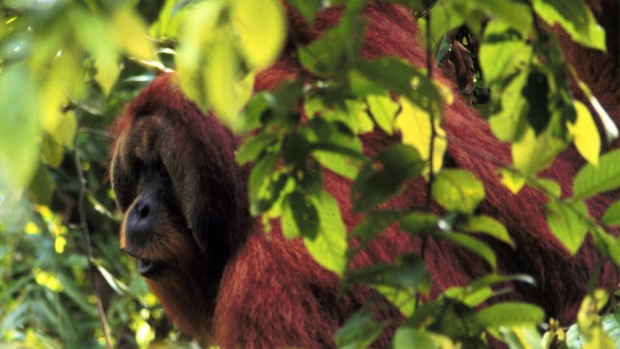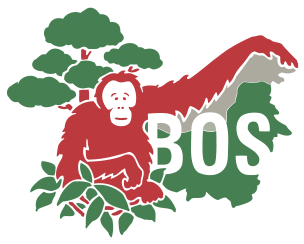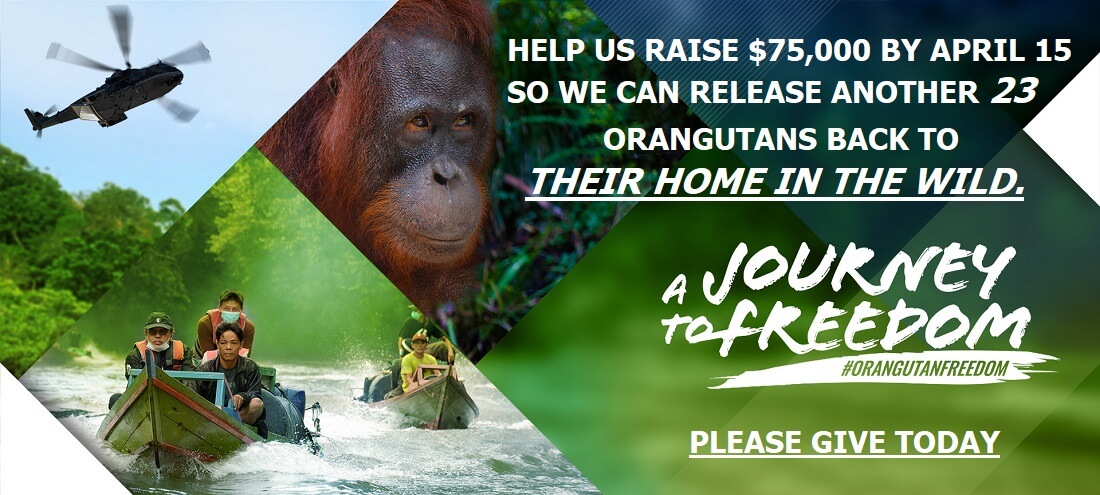Orangutans plot out travel plans a day in advance: Study
CTV News: 11 September 2013: The Associated Press: Seth Borenstein

Photo provided by Carel van Schaik. Orangutan Arno in the jungle of Sumatra in 1998 looking in the direction he intends to travel the next day and letting out a long whooping call to alert others of his route in case they need to follow him or stay clear (AP Photo/Perry can Duijnhoven)
WASHINGTON — It’s the ape equivalent of Google Maps and Facebook. The night before a big trip, Arno the orangutan plots his journey and lets others know where he is going with a long, whooping call.
What he and his orangutan buddies do in the forests of Sumatra tells scientists that advance trip planning and social networking aren’t just human traits.
A new study of 15 wild male orangutans finds that they routinely plot out their next day treks and share their plans in long calls, so females can come by or track them, and competitive males can steer clear.
The researchers closely followed the males as they travelled on 320 days during the 1990s. The results were published Wednesday in the journal PLoS One.
Typically, an orangutan would turn and face in the direction of his route and let out a whoop, sometimes for as long as four minutes. Then he’d go to sleep and 12 hours later set on the heralded path, said study author Carel van Schaik, director of the Anthropological Institute at the University of Zurich.
“This guy basically thinks ahead,” van Schaik said. “They’re continuously updating their Google Maps so to speak. Based on that, they’re planning what to do next.”
The apes didn’t just call once, but they keep at it, calling more than 1,100 times over the 320 days.
“This shows they are very much like us in this respect,” van Schaik said. “Our earliest hominid ancestor must have done the same thing.”
Scientists had seen such planning in zoos and controlled experiments, but this study provides solid evidence of travel planning in the wild, said Frans de Waal of Emory University, who was not part of the study.
Van Schaik said he and colleagues happened upon the trip calls by accident nearly 20 years ago, first with the dominant male Arno, who they followed more than the other 14 males. They waited to publish the results because he thought few people would believe orangutans could do such planning. But in recent years, the lab and captivity studies have all shown such planning.
Based on previous studies and monitoring, van Schaik figured the male lets the world know his plans so females can come to him or stay close. Some females may want to stay within earshot in case they are harassed by other males and need protection. Others can come to mate.





